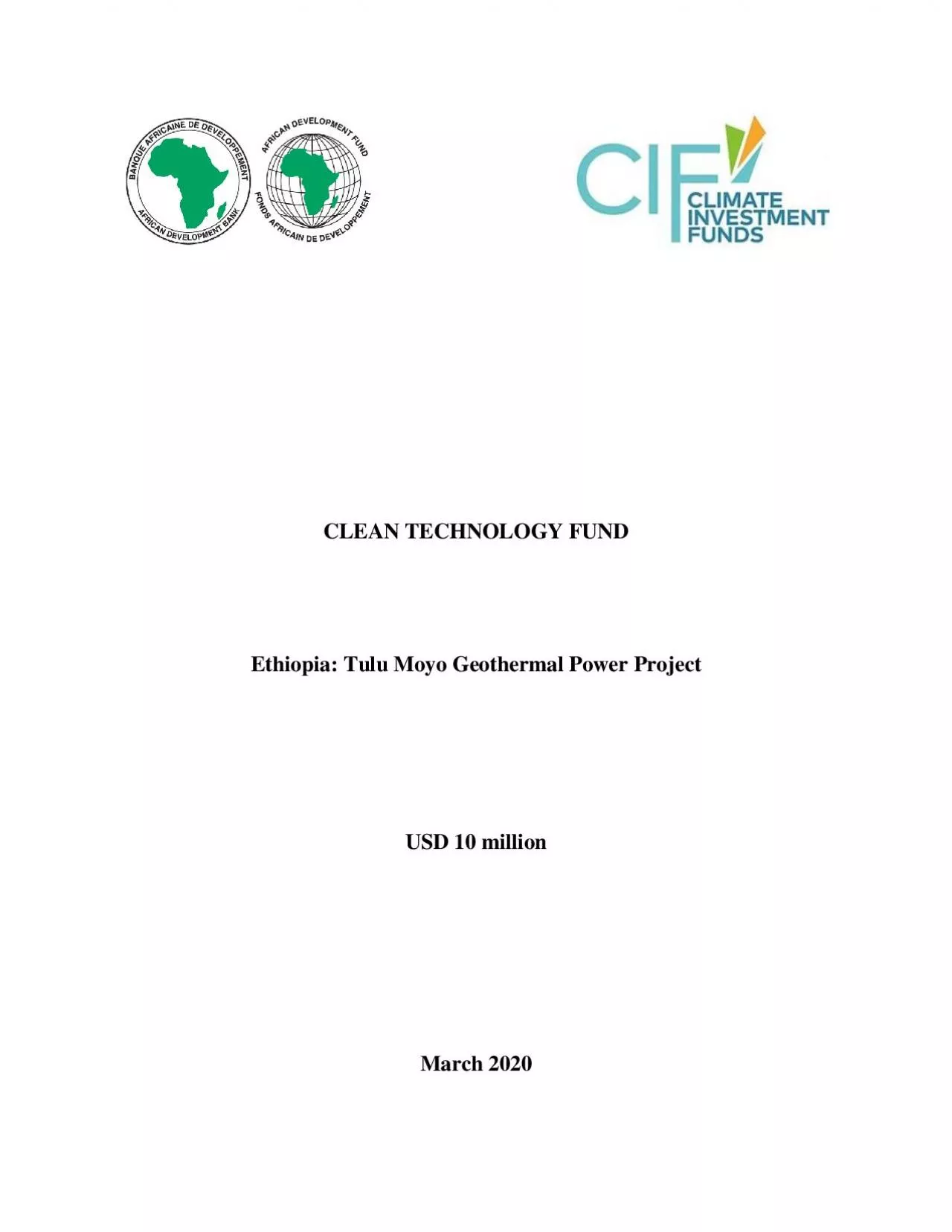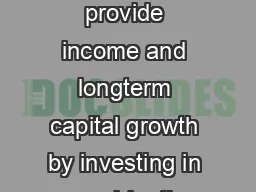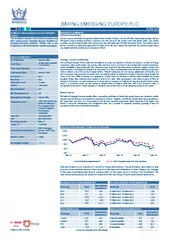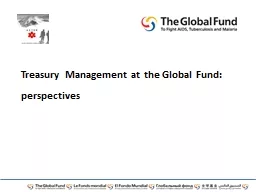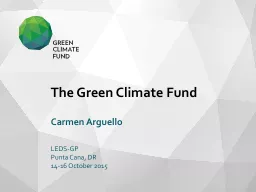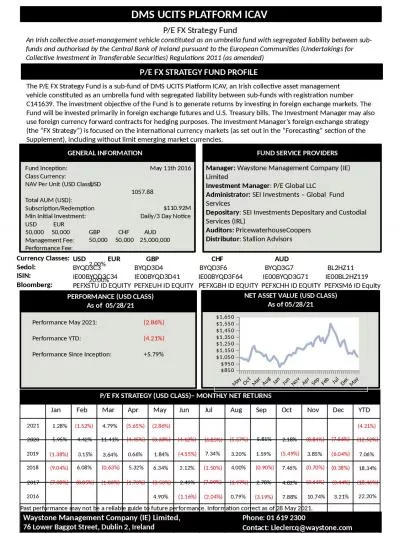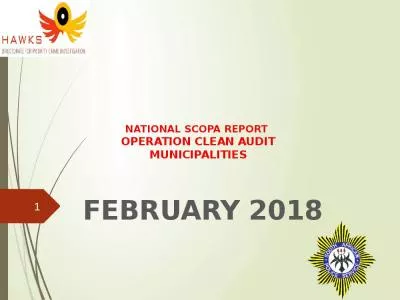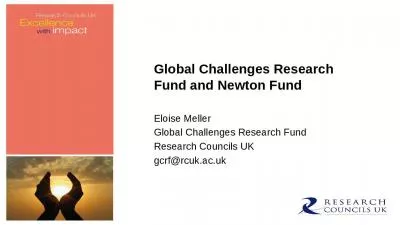PDF-CLEAN TECHNOLOGY FUND
Author : elizabeth | Published Date : 2021-09-03
Ethiopia TuluMoyo Geothermal Power ProjectUSD 10millionMarch 2020TABLE OF CONTENTSCOVER PAGE31INTRODUCTION62PROJECT DESCRIPTION63CTF INVESTMENT CRITERIA114MONITORING
Presentation Embed Code
Download Presentation
Download Presentation The PPT/PDF document "CLEAN TECHNOLOGY FUND" is the property of its rightful owner. Permission is granted to download and print the materials on this website for personal, non-commercial use only, and to display it on your personal computer provided you do not modify the materials and that you retain all copyright notices contained in the materials. By downloading content from our website, you accept the terms of this agreement.
CLEAN TECHNOLOGY FUND: Transcript
Download Rules Of Document
"CLEAN TECHNOLOGY FUND"The content belongs to its owner. You may download and print it for personal use, without modification, and keep all copyright notices. By downloading, you agree to these terms.
Related Documents

